Cupping therapy is certainly an intriguing concept, with its roots in ancient Eastern practices. While proponents claim it can alleviate a wide range of ailments, the scientific evidence remains limited. The procedure itself appears relatively straightforward, involving the placement of suction cups on the skin to promote blood flow. However, the mechanisms behind its proposed benefits are not fully understood. On top of that, caution is warranted, as the therapy may not be suitable for everyone. Those considering trying cupping would be wise to consult a qualified practitioner and approach the treatment with a critical eye. The true extent of its therapeutic potential remains a subject of ongoing debate.
This experience made our list of the 17 Best Massage And Relaxation Services In Port D Alcudia.
Key Points

Key points about Cupping Therapy:
- Cupping therapy involves the placement of specialized cups on the skin to create suction, which is claimed to improve blood and lymph circulation.
- The procedure has been used in ancient Chinese and Middle Eastern medical practices for centuries, but the quality of research on its efficacy is low.
- Cupping may provide modest benefits for conditions like lower back and neck pain, but evidence is inconclusive for treating migraines, asthma, and digestive disorders.
- Pregnant women, individuals with skin conditions, and those on blood thinners should avoid cupping due to potential risks such as bruising and burns.
- Selecting a qualified and experienced practitioner who follows proper hygiene and safety protocols is essential for ensuring the effectiveness and safety of cupping therapy.
Benefits of Cupping Therapy
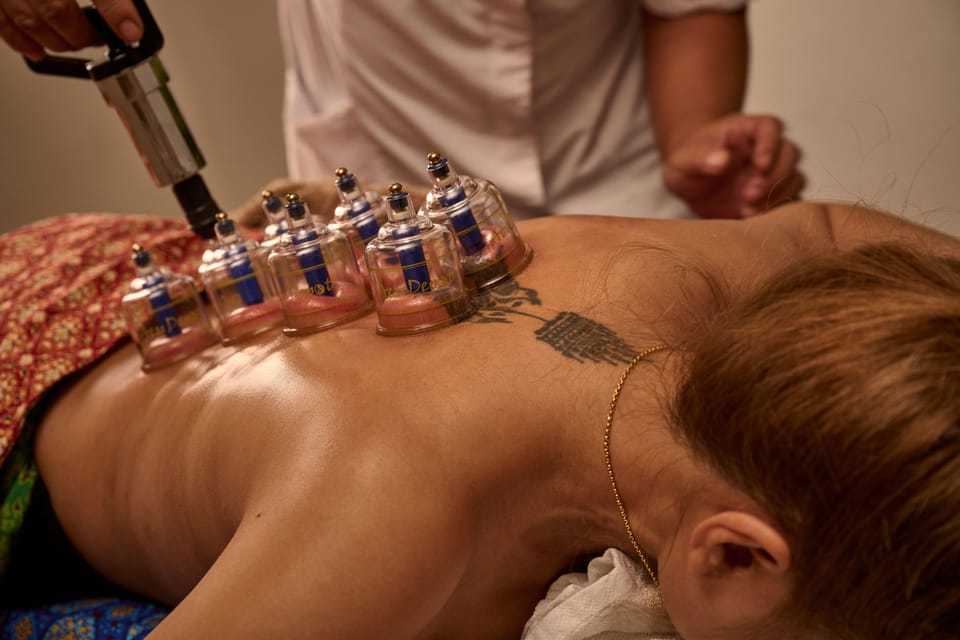
Cupping therapy is thought to provide a range of potential health benefits. Advocates claim it can improve blood and lymph circulation, relieve muscular pain, and promote relaxation by reducing stress and anxiety.
Some also believe it may be effective for treating back pain, migraines, respiratory issues, and digestive disorders. However, the scientific evidence supporting these claims is limited.
While some studies have suggested potential benefits, more rigorous research is needed to definitively establish the efficacy of cupping therapy. On top of that, the treatment carries risks, such as bruising and burns, which should be considered.
You can also read our reviews of more tours and experiences in Port D Alcudia.
Procedure and Technique
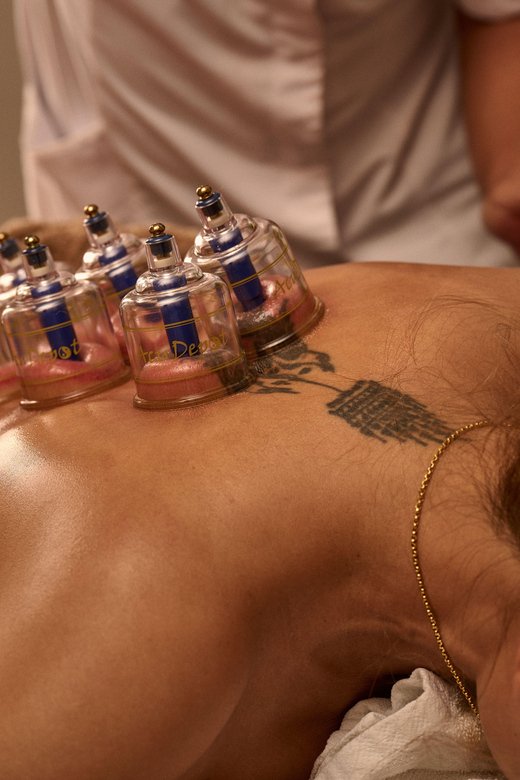
The process of cupping therapy typically involves the placement of specialized cups on the skin.
These cups are either made of glass, plastic, or silicone and are placed on specific areas of the body. The cups are then suctioned onto the skin, either through the use of heat or a manual pump, creating a vacuum.
This suction lifts the skin and underlying tissues, promoting blood flow and releasing muscle tension. The cups are typically left in place for 5 to 20 minutes before being removed.
The procedure may cause temporary reddish or purple circular marks on the skin, which fade within a few days.
Types of Cupping

There are several different types of cupping techniques used in modern practice.
Dry cupping involves placing cups on the skin and creating suction to lift the skin.
Wet cupping combines dry cupping with controlled medicinal bleeding.
Flash cupping uses quick placement and removal of cups.
Massage cupping incorporates cup movement over the skin.
Different cup materials like glass, plastic, or silicone may be used.
The choice of cupping method depends on the intended therapeutic effects and the condition being treated.
Cupping practitioners must be properly trained to safely and effectively perform these techniques.
- Dry cupping
- Wet cupping
- Flash cupping
- Massage cupping
Conditions Treated
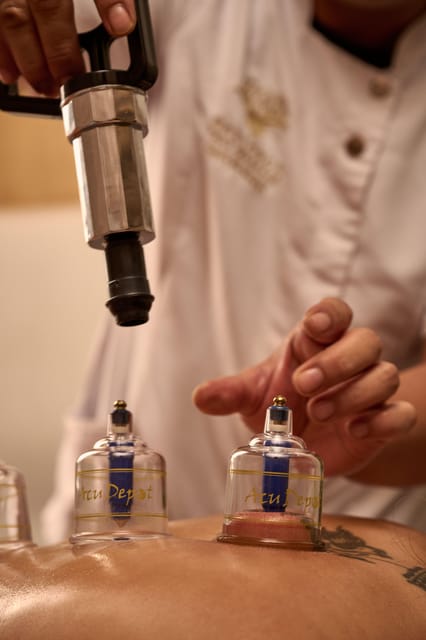
Practitioners of cupping therapy claim it can effectively treat a wide range of conditions, from musculoskeletal issues to respiratory problems and digestive disorders. They assert it improves blood and lymph circulation, relieves pain, and promotes relaxation.
However, the scientific evidence supporting these claims is limited. Some studies suggest cupping may provide modest benefits for lower back pain and neck pain, but the overall quality of the research is low.
The effectiveness of cupping for other conditions like migraines, asthma, and digestive disorders remains inconclusive. Experts advise caution and call for more rigorous clinical trials to determine the true efficacy and safety of this ancient therapy.
More Great Tours NearbyContraindications and Precautions
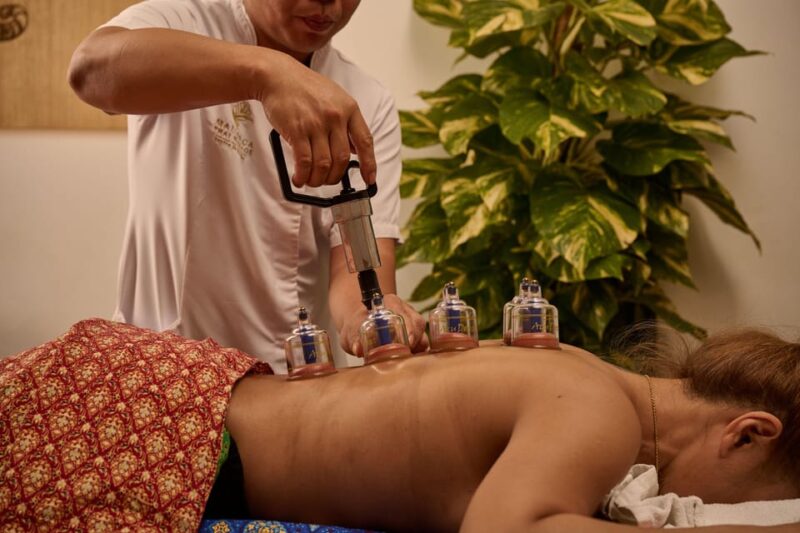
While cupping therapy is generally considered safe when performed by trained professionals, certain individuals should avoid this treatment or take precautions.
Pregnant women should avoid this treatment, as the suction could potentially harm the fetus.
Individuals with certain skin conditions, like open wounds or rashes, should also avoid cupping, as the cups may further irritate the affected areas.
Those on blood thinners or with a history of bleeding disorders are advised against cupping, as it may increase the risk of bruising or bleeding.
Plus, cupping should be used cautiously in patients with cardiovascular disease, as the sudden change in blood flow could be dangerous.
History and Origins
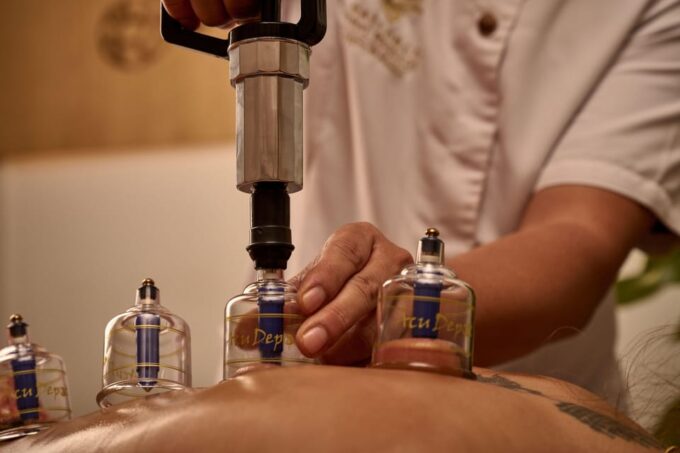
Cupping therapy has its roots in ancient Chinese and Middle Eastern medical practices, dating back thousands of years. The technique involves creating suction on the skin using specialized cups, which are believed to stimulate blood flow and promote healing.
While the exact origins are unclear, references to cupping can be found in early medical texts from China, Egypt, and Greece. The practice gained popularity in the West during the 19th century and continues to be used in traditional and complementary medicine today.
However, the scientific evidence supporting its efficacy remains limited, and more research is needed to understand its potential benefits and mechanisms of action.
Choosing a Practitioner

When considering cupping therapy, it’s important to carefully select a qualified and experienced practitioner.
Look for the following attributes:
-
Proper licensing and credentials: The practitioner should be certified in cupping therapy and have a thorough understanding of human anatomy and physiology.
-
Extensive experience: An experienced cupping therapist can better identify problem areas and customize the treatment to your specific needs.
-
Sterile and hygienic practices: Ensure the practitioner uses clean, sterilized equipment and follows strict sanitation protocols.
-
Transparent communication: A competent practitioner will explain the cupping process, potential risks, and expected outcomes to set realistic expectations.
Choosing the right cupping therapist can significantly enhance the effectiveness and safety of the treatment.
Aftercare and Recovery

After a cupping therapy session, proper aftercare is essential for a smooth recovery.
Patients should avoid showering for several hours and refrain from engaging in strenuous activities for the remainder of the day.
Mild redness, bruising, and soreness are common side effects that typically subside within a few days.
Individuals should monitor their skin for any signs of infection, such as increased pain, swelling, or discharge, and promptly seek medical attention if these occur.
It’s also important to stay hydrated and allow the body to rest.
Adhering to these aftercare guidelines can help maximize the benefits of cupping therapy and prevent any complications during the recovery process.
Frequently Asked Questions
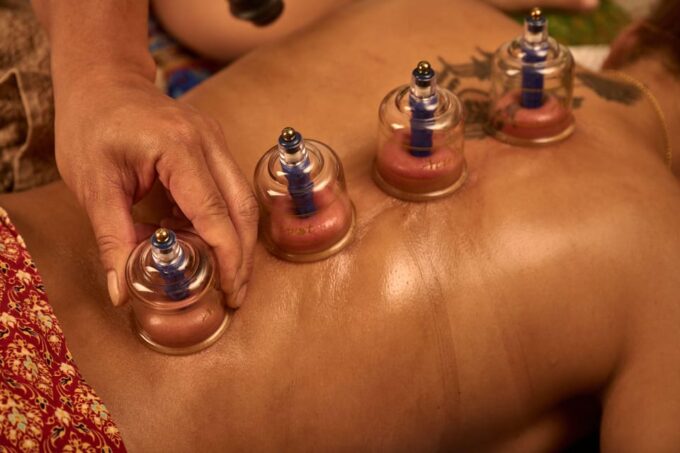
What Should I Expect During a Cupping Therapy Session?
During a cupping therapy session, the client can expect the therapist to create suction on the skin using specialized cups. This is intended to improve circulation and relieve muscle tension, though the effectiveness of this practice remains debated.
How Long Do the Results of Cupping Therapy Last?
The results of cupping therapy can last for several days to a few weeks, depending on the individual’s response and the severity of the condition being treated. However, the long-term effects may vary and require multiple sessions for sustained improvement.
Can I Continue My Daily Activities After a Cupping Session?
Typically, you can resume their daily activities after a cupping session. However, it’s recommended to avoid strenuous exercise or activities that may irritate the treated areas for the rest of the day to allow the body to fully recover.
Is Cupping Therapy Suitable for Children and the Elderly?
Cupping therapy may not be suitable for children and the elderly, as they may be more sensitive to the suction and pressure applied during the treatment. Caution is advised, and a consultation with a qualified practitioner is recommended to determine individual suitability.
Does Cupping Leave Marks or Bruises on the Skin?
Cupping therapy can leave temporary marks or bruises on the skin. The suction created by the cups draws blood to the skin’s surface, resulting in circular discolorations. These marks typically fade within a few days after the treatment.
Recap
Cupping therapy’s purported benefits lack robust scientific evidence. While the technique may provide temporary relief for some, its efficacy remains largely unproven. Individuals should exercise caution and consult qualified practitioners, as the procedure carries risks, especially for those with certain health conditions. Overall, a critical, evidence-based approach is warranted when considering cupping therapy as a complementary or alternative treatment.
You can check availability for your dates here:More Tour Reviews in Port D Alcudia
Not for you? Here's more nearby things to do in Port D Alcudia we have reviewed
- Port d’Alcúdia, Mallorca: Exclusive Half Day Sailing Trip.
- Port Dalcúdia, Mallorca: Exclusive Half Day Sailing Trip.
- Port Dalcúdia, Mallorca. Shared Full Day Sailing Trip.
- Port Dalcudia Virtual Tour Saltycycling Apple Vision PRO With 360º and 180VR
- 17 Best Massage And Relaxation Services In Port D Alcudia
- Leg Massage
- Back and Shoulder Massage
- Anti-Cellulite Massage
- Manual Lymph Drainage (MLD)
- Cupping Therapy
- Traditional Thai Massage With Essential Oils
- Thai Foot Massage
